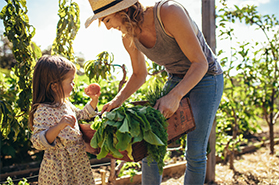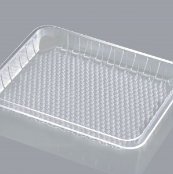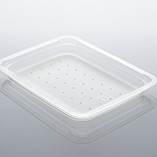
Bioplastics aren’t ready to close the loop on the circular economy
Climate change and sustainability are at the forefront of the news cycle, Aussie boardroom agendas, and dining table conversations alike. Australians are also becoming more conscious of our plastic waste, particularly with a growing awareness that what goes in our recycling bins will mostly not be recycled – not even once.
Fortunately, the way we handle plastics in Australia is expected to shift significantly in the next few years, with the Federal Government releasing some exciting and game-changing 2025 National Packaging Targets as part of the National Plastics Plan. We’ve written in some detail about the National Plastics Plan in some previous articles:
What the National Plastics Plan means for biodegradable and starch plastics
What food businesses need to know about the supermarket plastics revolution
To briefly revisit, let’s set the stage by exploring what’s set to change.
The National Plastics Plan
The Plan acknowledges plastics as a resource which are an important part of modern life, but also that as a nation we are not making the most out of what is an environmentally damaging resource. So, Government will be working with industry to push towards maximising the value of plastics, so that we can minimise environmental impact. In particular, the 2025 National Packaging Targets are of great relevance to those of us who use plastic packaging; in other words, virtually everyone, as is particularly obvious when you scan the aisles of any supermarket or glance into your own shopping trolley. Food and beverage packaging accounts for most of Australia’s plastic waste, and for many decades now most of this packaging has been manufactured from virgin plastics; furthermore, despite much of that packaging being popped in the recycling bin, the vast majority of “recycled” plastic actually ends up in landfill.
We’ve seen Government intervention make rapid & enormous change to the way we use plastics, with plastic bag bans already in place across almost the entire country; as a benchmark-setting leader in the sustainable food packaging space, Multisteps welcomes these national commitments and the upcoming changes that Australia is working proactively towards. From our perspective, the most pertinent of these targets are that, by 2025:
* 100% of packaging will be reusable, recyclable or compostable
* 70% of plastic packaging will go on to be recycled or composted
* There will be an 20% average recycled content within plastic packaging
(By the way, here at Multisteps, we’re well ahead of that last target: our products have the ability to offer packaging with up to 100% recycled content.)
The recyclable vs compostable dilemma
You’ll notice that some of these targets involve “compostable” plastics. You’ve likely seen these in fashionable cafes, or they’ve come with your UberEats sometimes. They’re a great way for businesses to signal that they’re environmentally-inclined. If you run a food business, maybe you’ve even considered switching to compostable plastics. After all, with major supermarkets making important plastics-related pledges, how we handle our plastics is a hot conversation topic across the country right now. So you’re wondering how to make responsible packaging choices for the future of Australia and the world; if your food business sells to supermarkets, you’re also wondering how to meet increasingly stringent requirements.
What’s more, knowing these requirements are coming in anyway, you might be thinking it’s good to be ahead of the curve and reduce your carbon footprint while demonstrating your values and building customer loyalty.
With all that in mind, you’re wondering which route to go: recyclable or compostable? You’ve heard about how most recyclable plastics end up in landfill. On the other hand, on the surface, compostable “bioplastics” may sound very promising – breaking down into pieces and returning to the earth, harm-free. Unfortunately, it’s certainly not that simple.
Compostable ≠ composted
Just like a recyclable product won’t necessarily be recycled, a compostable product may not be composted. However, the reasons why these loops aren’t closed in the circular economy are quite different.
Fortunately, we already have the infrastructure in place to turn recyclable plastics into recycled products. The reason recyclable products frequently end up landfill because of a lack of demand for plastics with recycled content; and this demand-side lever is changing, because the 2025 targets will require packaging to include more recycled content. When you’re choosing to make use of recycled plastics in your plastic packaging, you’re creating demand for recycled plastics content and helping to close that loop.
On the other hand, Government is yet to significantly invest in industrial composting facilities, and there’s not really been anything announced yet to indicate that this will be changing anytime soon. In the meanwhile, there are some small-scale privately-run composting facilities; but for the most part, those starch-based “compostable” cups Aussies are getting with their coffees-to-go aren’t going to end up in a composting facility. Like plastics, they’ll end up in landfill.
You may at this stage be wondering: won’t biodegradable plastics turn into compost in landfill? Unfortunately, it’s not that simple: modern landfills are a dry, air-tight environment where organic matter is mummified rather than decomposing (which requires oxygen).
Unless significant Government investment takes place in composting infrastructure, compostable plastics remain “wishcycling” at this stage. They also can’t be popped in the recycling bin, so they’re essentially no different from general waste. In other words, just because a product is made of materials that can technically be composted, that doesn’t mean that it can be composted in our current waste management system. This has been a bone of contention in a recent ACCC case, The Federal Court found that describing the products as “biodegradable and compostable” referred to inherent characteristics of the picnic product, rather than being a claim regarding a “future matter” (i.e. whether you will be able to compost the products).
Indeed, if your customers have a compost bin at home, they can compost starch-based products. But assuming most of your customers don’t, industrial composting is just not ready yet.
When it comes to recycled content, aim high
Increasing demand for recycled plastic content means that you can contribute to keeping an existing resource in the circular economy for longer; it’s still a better choice than packaging your products with well-intentioned starch plastic packaging that ends up in landfill. Even better, choosing packaging products that are predominantly made of recycled content means that you’ll be reducing the need for more virgin plastic to be manufactured; after all, plastic packaging that contains only 20% recycled content will still require 80% virgin plastics.
That’s why we’re flipping that equation. Here at Multisteps, all of our products have the ability to offer packaging with up to 100% recycled content. We invest significantly in R&D, ensuring quality packaging that keeps or customers’ products and produce fresh, while also having high recyclability value. We’ve proven that up to 100% recycled content is a very achievable reality in the plastics packaging business, and we’d be delighted to help more Australian food businesses do better.
















